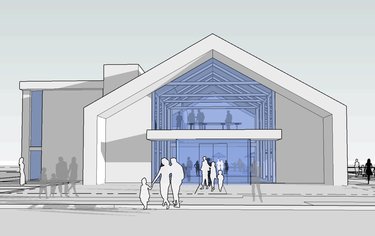Black history site will be green
ALBANY — The Underground Railroad Education Center has received a second large grant for the interpretive center that it plans to build in Arbor Hill. This one is to make it carbon neutral.
The New York State Energy Research and Development Agency gave the project $1,107,457, according to an announcement from Paul Stewart who with his wife, Mary Liz Stewart, founded the Underground Railroad project.
“The building will be a model of carbon-neutral performance in addition to being the go-to place for educational opportunities related to African-American history and culture,” said Paul Stewart.
The center will be built with salvaged materials, use geothermal heating and cooling, and be powered with solar energy.
In July, the Underground Railroad Education Center received $2 million through the New York State Capital Assistance Program to build the interpretive center.
The cost of the construction project is expected to be about $10 million, Stewart said, of which $3.4 million has been raised so far.
In the 1990s, the Stewarts founded what was then called the Underground Railroad History Project, which purchased a brick row house at 194 Livingston Ave. that was the home of Black abolitionists Stephen and Harriet Myers.
Stephen Myers was the editor of The Northern Star and Freeman’s Advocate. “We devote all our time to the care of the oppressed who come among us,” he wrote in 1860.
Largely through grants and volunteer efforts, the Stewarts’ not-for-profit organization saved the venerable brick row house that had been on the verge of collapse. It serves as both a museum and a space for meetings and myriad events.
The center’s mission is “to research and preserve the story of the Underground Railroad and show its connections to today’s concerns.” It organizes an annual conference, provides youth programming throughout the year as well as speakers and workshops, and is engaged in restoring the Myerses’ home.
The modern interpretive center will be located two lots east of the historic row house now on the National Register of Historic Places.
In addition to providing more space for programs, the new center will also provide office space, a commercial kitchen and café, a children’s room, a library and research area, a conference room, archival storage, a media room, and assembly space.
— Melissa Hale-Spencer


